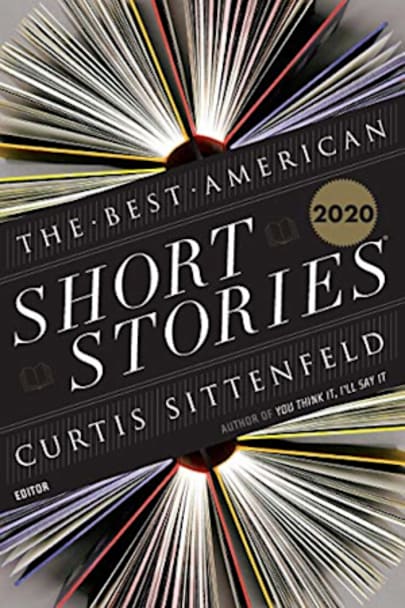“To read their stories felt to me the way I suspect other people feel hearing jazz for the first time,” recalls Curtis Sittenfeld of her initial encounter with the Best American Short Stories series. “They were windows into emotions I had and hadn’t had, into other settings and circumstances and observations and relationships.” Decades later, Sittenfeld was met by the same feeling selecting the … selecting the stories for this year’s edition. The result is a striking and nuanced collection, bringing to life awkward college students, disgraced public figures, raunchy grandparents, and mystical godmothers. To read these stories is to experience the transporting joys of discovery and affirmation, and to realize that story writing in America continues to flourish.
THE BEST AMERICAN SHORT STORIES 2020 INCLUDES T. C. BOYLE • EMMA CLINE • MARY GAITSKILL
ANDREA LEE • ELIZABETH McCRACKEN • ALEJANDRO PUYANA WILLIAM PEI SHIH • KEVIN WILSON and others
more



.
Haven’t read it yet.
Think of the Best American Short Stories annual as a sort of Rorschach test. Regardless of what you think you think of the 20 stories included each year, perhaps what it’s really showing you is you. This annual is a yearly ritual for me just as it is for a lot of writers. I always do it the same way. First, I read the table of contents, the titles and authors and original publishing venues of all 20 stories. Almost always, there are repeats, three-peats and four-peats of writers who keep making it somehow, year after year. Then I go to the back and read the authors, titles and venues of the 100 Distinguished Stories that received a mention but didn’t make the grade for reprinting. Then I read the stories, stopping after each one to flip back and see what the writers said about their own stories. I check them off as I go. I believe in this annual, though it is patently undemocratic. The 120 stories picked for inclusion are picked by one person, the series editor. Then, out of those, the 20 reprints are chosen by one person, the guest editor. Yet it has gone on this way, more or less, since 1915, and nobody complains. Or if they do, we don’t hear about it. This makes the decision-making idiosyncratic, meaning it’s pretty unlikely anybody will agree that every one of the 20 stories belongs. Certain stories are simply going to appeal more to specific tastes than others. That’s why “Sibling Rivalry” by Michael Byers strikes me as a pretty great story, because its hero is a parent who is living in a time when he can, and is expected to be, monitoring his child’s emotional state 24/7 and watching for anomalies, spikes and dips. It’s stalking. Byers sent this story out for 6 years. Mary Gaitskill’s “This Is Pleasure” is about a different kind of creepy intrusiveness on the part of the female hero’s male friend, a guy who gradually accrues a career-ending set of complaints by women — many of whom he considers friends — regarding weird behavior and unsettling remarks he inflicted on them, often in a business setting. Yet she can’t help but go on liking him. Scott Nadelson’s “Liberte” is shocking because you’re a good way in before you realize the female hero Louise Nevelson is having an on-again-off-again romance with the actual Celine who wrote that devastating pit-and-pendulum of a novel, Long Day’s Journey Into Night. Then there’s “The Hands of Dirty Children” by Alejandro Puyana, about the ongoing disaster of Venezuela. You’ve probably seen poverty, but likely you’ve not seen a place where all trash collection has stopped and little gangs of homeless starving 7-year-olds are all around you on the street, and keeling over and dying right in front of you. “Kennedy” by Kevin
Wilson might be triggering for anyone who went to public school in the 70s, about a time when the disturbed preyed on the non-violent and the system had no training
in crazy. Finally, “The Special World” by Tiphanie Yanique plays with the hero’s journey structure, trying to fit it to the bizarre first-year experience of the African-American hero who has been targeted for recruitment to her church by an evangelizing and very forward young white woman. And that’s just six out of the twenty stories, which is a somewhat idiosyncratic way of recommending a book, and which is probably more revealing of the recommender than anything else.